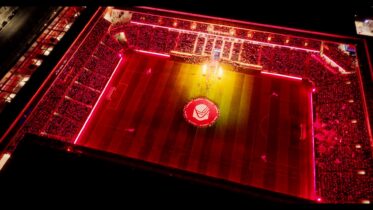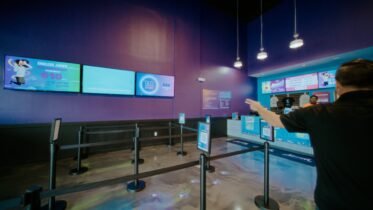Whatever business you’re in, when it comes to signage, there are clear advantages to going digital. Digital signage saves time, and over the long term, money. Digital signage drives new business. The dynamic nature of digital signage empowers the kind of immediacy and relevance not possible with more conventional, established marketing and merchandising tools like posters and brochures.
Here are the three main ways companies can justify the shift to digital signage:
1. Budget
A poster for a shop window or wall costs very little in material goods, but the real costs are in planning time, the billable hours for graphic design and pre-press, printing and delivery. It adds up, especially when marketing messages are changed weekly or seasonally. Paper is cheap, but delivery and other labor costs are not.
Add to that the way many customer-facing businesses — from apparel stores to banks — struggle with a disturbing percentage of marketing materials that either never get put up, or go up and then comes down on a timeline that doesn’t match up with head office plans. This is known as compliance, and it has been an issue across retail for decades.
Digital signage resolves these pain points. While the initial capital costs of a digital display are certainly higher, flat panel display costs are dramatically lower than they were even five years ago, and Total Cost of Ownership modeling suggests over their operating lifespan, they can save and then make money back.
Here’s how:
First, compliance rates soar, because new messaging is digitally delivered via the internet, and almost any robust digital signage software management platform can schedule content to start and stop down to the day, hour and minute.
Second, graphic design costs are lowered by using pre-designed templates that can easily be changed, regardless of software knowledge. Updates can be done in seconds, and even automatically if the templates are married to real-time data.
The TCO Advantage of Smart Signage
Download this comprehensive study on how smart signage compares to traditional digital displays. Download Now
Third, digital signage turns one message into multiple, running in rotations, or scheduled according to the time of day and audience characteristics. A coffee shop may see retirees and stay-home parents through a day, and be full of twentysomethings in the evening. Being able to change content is important since it’s a different crowd with different marketing priorities.
Fourth, the visually rich, dynamic capabilities of digital signage tend to boost sales. Most major quick service restaurant chains have converted their printed, static menu displays because they not only make updates easier but also increase overall sales performance.
Beyond the hardware, capital costs for digital signage projects have also been reduced by smart commercial displays. Samsung’s Smart Signage Platform, for example, removes the need for a costly external media player or PC by embedded a powerful, media-ready System-on-Chip media player inside the display.
2. Content
It’s not only about the physical screens, but also what’s on the screens. Digital signage projects are most successful when businesses think about what kind of content is on display, and why, as well as how that content will be managed and who will be responsible for keeping the on-screen material fresh and relevant.
Just putting up digital signage and finding something unrelated to broadcast is a mistake. Many smaller businesses have put up screens and populated the layout with weather information and news headlines just because that information is readily available and changes frequently. But is that material relevant in the context of the business, or would that time be better used to market products and services available on the premises?
Businesses should think about customers or co-workers who will see the screen, and what will matter to them, and then have some cause and effect. This is guaranteed whether messaging raises awareness and sales of products, or boosts understanding of company programs, which then drives enrollment and acceptance.
Effective content, just as with print, is best done by professionals who understand design and do it well. Fortunately, for budget-constrained businesses, many content management platforms provide tools for pre-designed templates that already have polished design treatments.
3. Technology Selection
Any digital signage industry veteran has heard this customer question repeatedly: “Why do I need to use commercial monitors when I can go to a big box and buy an HD TV for much less cost?”
TVs tend to cost less, but they’re not properly equipped for digital signage applications. Televisions are designed for a few hours of binge-watching at home. They’re not engineered for 16/7 or even 24/7 operations, in sometimes demanding environments with a lot of dust and bumping. A TV warranty probably won’t be honored for a commercial job. TVs also don’t have some of the connectors and engineering that enables remote management and control.
Commercial displays come with a range of design types, including high brightness models that can sit in a shop window and not only cut through direct sunlight — you won’t even see a TV’s output — but also tolerate the heat load of that direct sun. Outdoor advertising’s digital transformation, from posters and billboards, owes a lot to the fact display technology is now suitable for sunlight and the elements.
Getting Started
There’s a lot to learn, but starting with the basics is always a good plan. There are plenty of good resources online, providing advice and reference examples. The biggest thing is to sort out the objectives, then tune the project and program to meet them.
Digital signage can provide a new level of customer interaction and engagement for organizations.









